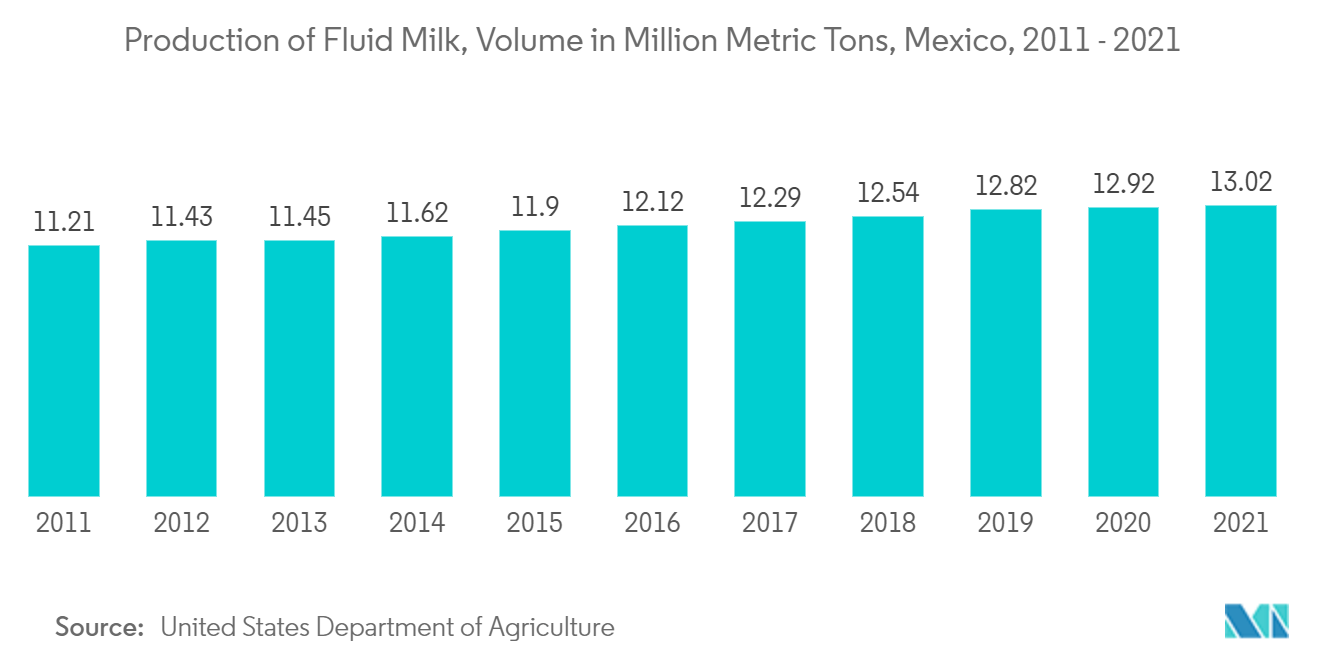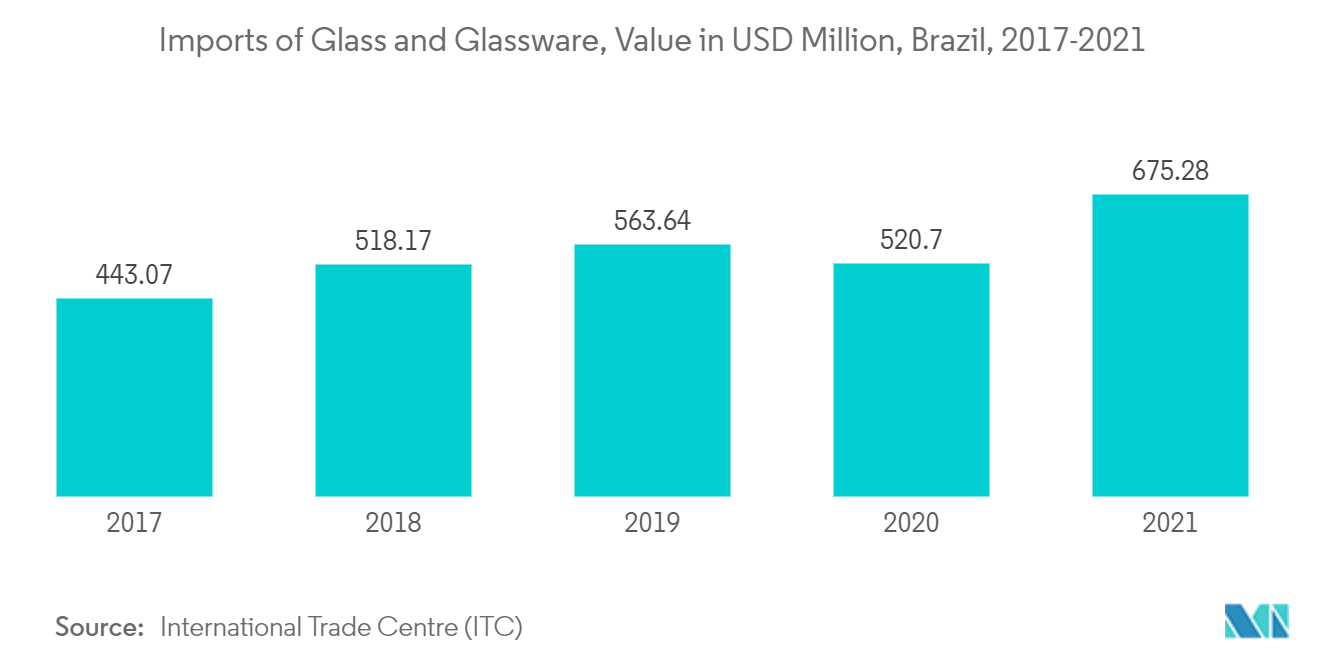Market Trends of Latin America Dairy Packaging Industry
This section covers the major market trends shaping the Latin America Dairy Packaging Market according to our research experts:
Milk Segment is Expected to Account for Significant Market Share
The increasing availability of packaged dairy products through various retailing channels owing to the rising population and changing diets, coupled with an expanding consumer preference toward protein-based products, is expected to increase the adoption of dairy-based products across the region, driving the market's growth.
Milk is the most consumed dairy product across the globe. The high moisture and minerals present in milk make it very challenging for the vendors to store it for an extended period. It is one of the significant reasons for milk being traded as milk powder or processed milk.
With the current milk processing technology, liquid milk packed in a bottle has a shelf-life of around 10 to 21 days when stored at 4-8°C. With the emergence of processes like UHT (Ultra High Temperature) treatment of milk, the shelf life of packaged milk is further extended up to a year without refrigeration.
With the increased milk production on a global scale, packaging solutions regionally will also witness increased demand, driving the market. The need for packaged milk and single-serve drinking bottles is anticipated to expand in the region over the next few years due to the expansion of dairy distribution channels, including convenience stores and supermarkets.
According to data from the US Department of Agriculture, Mexico's fluid milk output was recorded to reach over 13 million metric ton in 2021, from about 12.9 million metric ton in the preceding year, 2020. Mexico, one of the significant milk-producing countries in the region, witnessed increasing milk production volumes, representing the growing need for milk packaging.

Glass Packaging is Anticipated to Drive the Market Growth Over the Forecast Period
Glass is one of the most preferred materials for packaging food and beverages, including dairy products, especially milk. Properties like excellent barrier properties, sterility, and reusability make it a superior packaging material. The other significant advantage of glass packaging is that it can be molded into various shapes and sizes, facilitating its use across different industry verticals.
Even though glass remains the preferred packaging material for various products, the growing use of plastics as a replacement for glass is expected to hamper the market's growth. Advancements in the field of plastics for safe usage in different applications are expected to restrict glass as a material for packaging.
Returnable glass bottles are a cost-effective option for companies to deliver their products. This form of packaging is primarily used in the non-alcoholic beverage industry. About 70% of the bottles used for natural mineral water are made of plastic. The choice of bottled-water packaging material is increasing, considering environmental considerations.
Brazil is a significant market in the area, and any changes there impact the dairy industry in Latin America. The demand for processed cheese has increased in Brazil due to the country's growing use of traditional dairy products like Requeijo cheese. Among all income levels in the region, milk is a standard product consumed as part of a daily staple diet.
For instance, according to International Trade Center (ITC), in 2021, the imports of glass and glassware in Brazil were valued at around USD 675.275 million, a 29.68% increase in import value from the previous year, 2020, which was about USD 520.703 million.
However, it is expected to take some time for milk yields in the nation to recover because of the feed supply deficit brought on by the truckers' strike. The country's expanding cheese market is also expected to be impacted by the country's decreased milk production.


